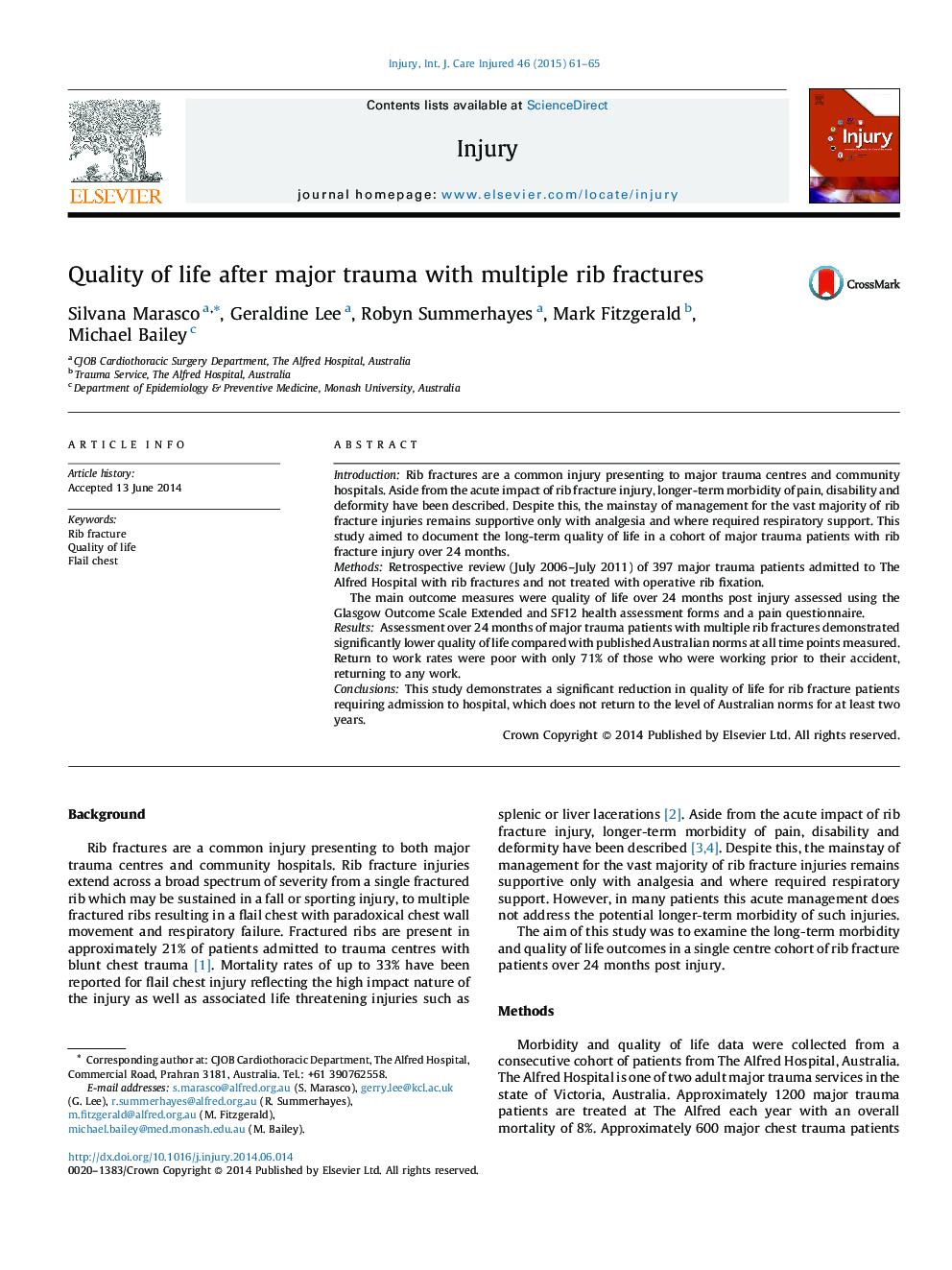| Article ID | Journal | Published Year | Pages | File Type |
|---|---|---|---|---|
| 3239171 | Injury | 2015 | 5 Pages |
IntroductionRib fractures are a common injury presenting to major trauma centres and community hospitals. Aside from the acute impact of rib fracture injury, longer-term morbidity of pain, disability and deformity have been described. Despite this, the mainstay of management for the vast majority of rib fracture injuries remains supportive only with analgesia and where required respiratory support. This study aimed to document the long-term quality of life in a cohort of major trauma patients with rib fracture injury over 24 months.MethodsRetrospective review (July 2006–July 2011) of 397 major trauma patients admitted to The Alfred Hospital with rib fractures and not treated with operative rib fixation.The main outcome measures were quality of life over 24 months post injury assessed using the Glasgow Outcome Scale Extended and SF12 health assessment forms and a pain questionnaire.ResultsAssessment over 24 months of major trauma patients with multiple rib fractures demonstrated significantly lower quality of life compared with published Australian norms at all time points measured. Return to work rates were poor with only 71% of those who were working prior to their accident, returning to any work.ConclusionsThis study demonstrates a significant reduction in quality of life for rib fracture patients requiring admission to hospital, which does not return to the level of Australian norms for at least two years.
